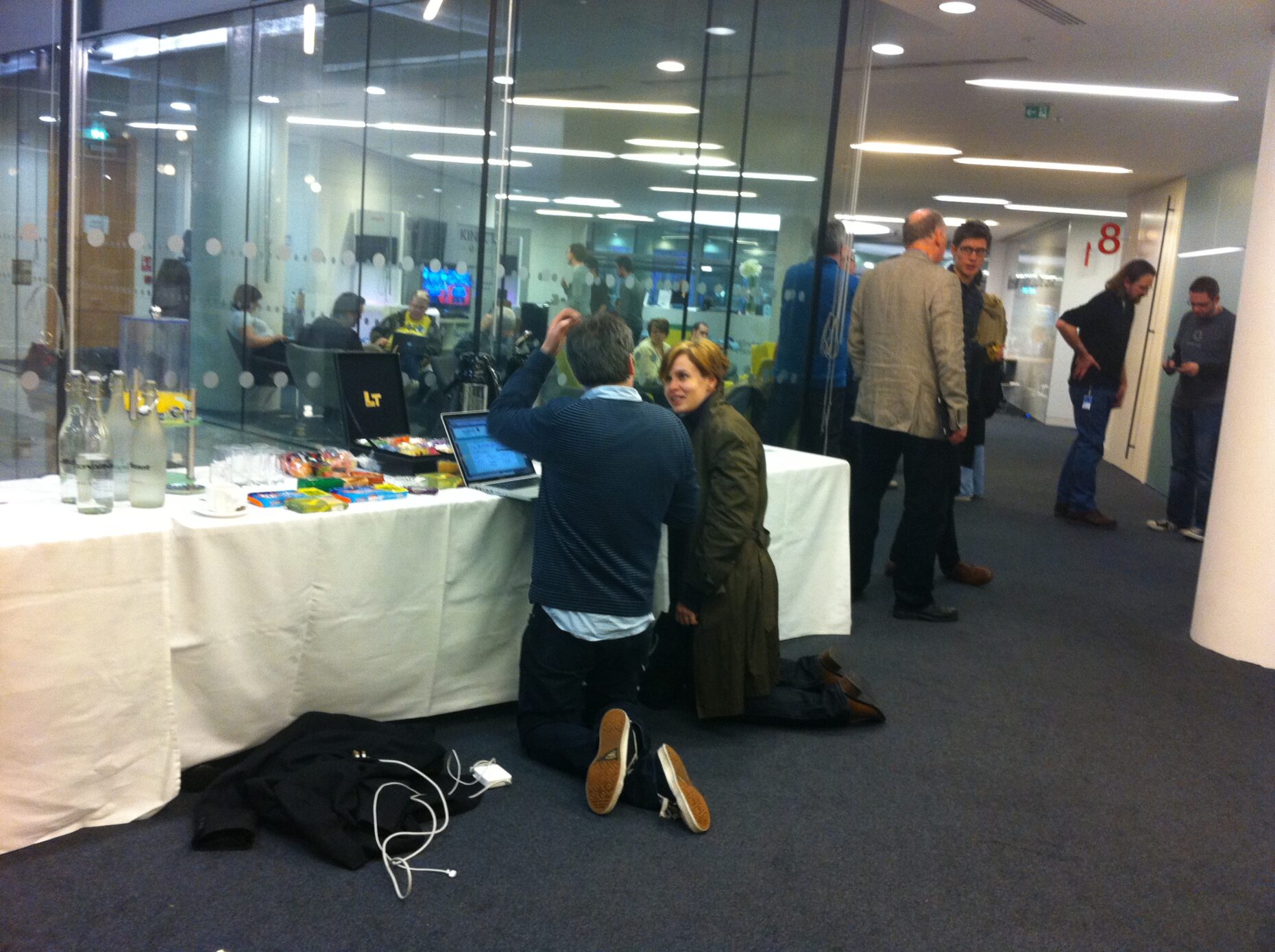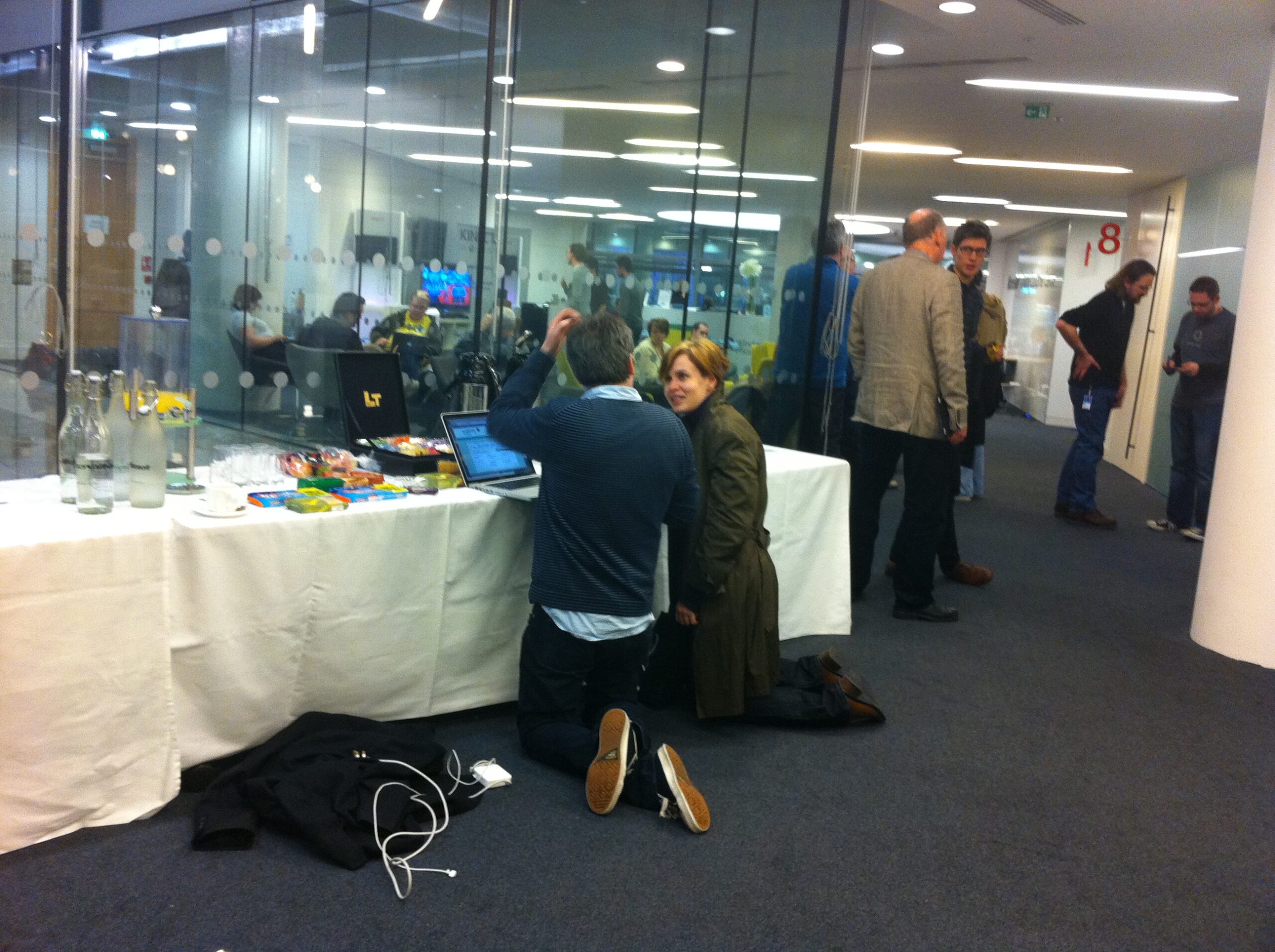Briggsy and I have been chatting to some good folk across the pond recently about running a Govcamp-style event, and how unconferences work. Some of their senior folk are nervous, understandably, about trying what seems like quite a radical approach. What if the conversation veers off course? What if the sessions go round in circles? What if we don’t get the right kind of sessions proposed?
Here’s some thoughts I just emailed over, which I thought I’d post here and see if anyone else can contribute more good ideas. Without destroying the value of an unconference-style event, how can a bit of a structure help things along? Here’s what I came up with:
I think we all have the fear as the unconference kicks off that we’ll all end up just sitting round uncomfortably in silence… though happily that never happens! The other risk is that it’s structured too much, and people switch in to passive-recipient mode (as per a traditional conference) rather than actively engaging and taking responsibility for making sessions useful.
If you want to impose some light structure, here’s a few ideas:
– kick off with show+tell, maybe an hour or so which is a succession of short talks, no more than 5-10 minutes each, to provide some stimulus for the rest of the event and enable speakers to pitch a longer session later in the agenda and get people interested in the topic. Then follow that up with an Open Space element to explore those topics in more depth, more interactively
– alternatively, define some broad ‘strands’ to the event, maybe theming the discussion according to room: ‘In Room 1, we’ll be talking about microformats, in Room 2, we’re looking at RDF, in Room 3: business strategies, and in Room 4, user experience’ – explain people can come and go between rooms/strands, but at least that way people have a sense of what to expect
– tee up some people in advance, so they don’t turn up cold. It’s fine if 50-70% of the audience just turn up, but you want a hard core of perhaps 20% at least to be actively thinking about what kind of sessions they could run, and maybe prep some material in PowerPoint or an online demo to show people. If they’re planning it in advance (do you have a conference forum/blog/wiki set up?) then they’re more likely to want to actively pitch in on the day and make it a success
Finally, I’d say remember the way the event will be judged by the participants: sitting and listening to people, however clever, still doesn’t leave you feeling as good as having an active conversation with others about stuff you’re interested in. That could be three people in a corridor or 50 people in a seminar room – the fact is, by giving people the freedom to define what useful topics are for them, they’re more likely to feel positive about the event. And some of the greatest value may come from conversations in the margins of the official sessions – which is kind of infuriating if you’re the organiser, I know.
What else could you try?





Comments
I’d expand your third point – a forum or wikispace is not just about teeing up people in advance, but it serves to help people gather a bit of feedback as to whether their idea has any interest – gather feedback which might perhaps help them do a bit more research or prepare different examples, plus if 2 people find they were planning a very similar talk they can actively find each other at the start and advertise a joint session.
Also, and this is perhaps what you suggest in your intro, it can serve to reassure any senior doubters that there is a value to people going.
I love the unconference format and have been inspired by the events I’ve been to. The lack of structure actually can make the day more interesting and, indeed, dangerous.
What’s missing for me is more the follow up than the actual day. I don’t know if tea camps fill in the gaps, but for me out in the wild south west its sometimes difficult to see whether the latest camp did bring about change or put something on the agenda of the people at the big table.
Actually, that’s the other thing I’d like to change. I’d love to handcuff my boss, CEx or, better still, Leader and drag them along to the next GovCamp.
I think that one of the things that persistently put people off at unconferences is poor chairing in discussions. Often, people come away feeling that a small number of attendees have dominated a session. Is it worth giving people the options of having somebody to chair their session for them if they don’t think they have the necessary crowd control skills?
Love these ideas. I have been to several conferences in the last few weeks: all well organised, with very good speakers. But, I admit to feeling a bit frustrated that so many undoubtedly smart folks in the audience were able to contribute so little. Two more ideas for the pot…
I think it helps to ensure absolutely everyone at the event has a chance to talk and be listened to in the first 15 minutes. Maybe lay out the room in horseshoes of 5-6 chairs and ensure folks are mixed up – not sitting with their mates. Ask them (in 2 minutes) to introduce themselves to the others in their horseshoe, explain what they want from the event and have a bit of a natter. Afterwards invite one person from each horseshoe to summarise the discussion to the whole group. Costs no more than half an hour.
How about having un-speakers? Instead of getting speakers to speak to everyone, conference-style, why not get sub-groups (maybe in the horseshoes again) to interview the speakers, prepare a presentation on the un-speakers topic and give it to the whole group. To turn things really around, maybe get the un-speakers to ask the questions at the end. And clap.
I think there may be a much simpler solution: before organising an unconference, go to one.
In theory, the risks of an unconference are enormous, in practice (given some of the right kind of preparation), they simply don’t materialise. Attempting to mitigate risks which aren’t going to happen could easily make things worse rather than better.
There is certainly something to be said for teeing some people up in advance, and alternative formats are always worth exploring, but the (perfectly good) reason for using a different format is because you have chosen to do something different, it shouldn’t be because there is a fear that an unconference won’t work.
Great suggestions for introducing nominal structure to reassure folks. I’d take issue with the breadth of this assertion, however: “sitting and listening to people, however clever, still doesn’t leave you feeling as good as having an active conversation with others about stuff you’re interested in.” While that definitely would be my perspective, I’ve consistently encountered a reasonable number of folks who adopt the contrary position that I am more tempered in making assertions about what people will value.
I agree with Jeffery that some folks do prefer to sit and listen, but I often wonder whether this is because they genuinely believe they get more this way, or because they feel (subconsciously or otherwise) uncomfortable with the interaction. I have facilitated quite a few events like these and, over the years, I have had probably more than half a dozen folks come to me to say that, whilst they were scared to death beforehand, they actually ended up enjoying the event; one or two people have said they felt a little strained; but I have had no-one argue that a less participative format would have been more effective. I strongly believe that groups as a whole get more from unconference-style events but it is down to the facilitator to be sensive and to ensure that everyone is as comfortable as possible in taking part.
I have been running what some call “structured unconferences” for twenty years, and wrote a book, published in 2009 about what I’ve found works best. Providing just the right amount of structure—not too much to stifle, and not too little leading to chaos—is an art.
My experience agrees with yours, Mark; I’ve had many people who were scared become big proponents of unconference designs once they discovered the many positive benefits of a participatory format. And you might be interested in the roundtable approach I use at the beginning of a Conferences That Work design event that allows participants to learn about each other, uncovers questions and topics of interest, and exposes the experience and expertise available in the group.
Yes, Jeffrey, there are people who prefer to sit and listen, but they are a small minority at every event I’ve ever facilitated and I don’t know that it’s possible to create a design that is pleasing to everyone. Given that there are far more traditional broadcast-style conferences still being run in just about every sphere, sit-and-listeners are not going to be shut out from conference opportunities.
Stefan, I agree, the single most effective way for people to understand how unconferences work is to participate in a well-organized one!
Steph, yes, I’ve found using short talks can be very stimulating. I’m a fan of the Pecha Kucha (or Ignite) format, which adds an entertainment feel to the presentations.
There’s a lot more of my thoughts about these and other related issues on my blog and in my book.
[…] I have run quite a few. On Friday, I was glad of the opportune reminder in this posting – A bit of structure for your unconference by Steph Gray – and also the discussion of the post which took me to Conferences that […]
Unconferences require extroverts and strong personalities to get them going but there are ways to coax the quieter ones out of their shells – I like the horsehoe idea above.
But I’d like to speak in defence of being in the quieter group. I’m more of a ‘Grab people in the margins’ sort of person, I usually have an idea of who I want to talk to and why and the unconference format is great for freeing people from the confines of their organisations. It’s more ‘Let’s talk about how we two people might work together’ and I find that productive.
I enjoy the sessions, asking questions and general debate, but I guess my point is that the quiet ones are making things happen too. Social networking with unconference attendees can get people warmed up and more likely to hit the ground running.